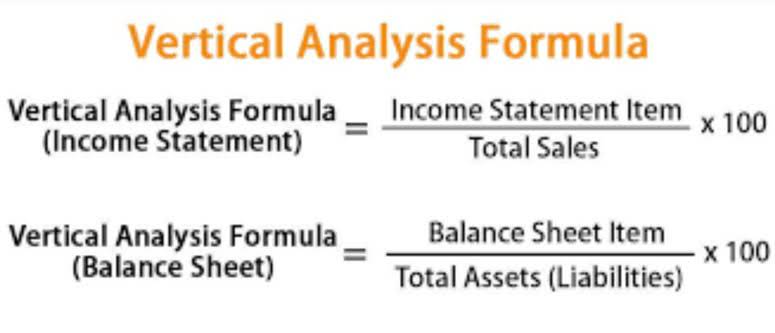Content

Thankfully, even a full-scale reboot does not require an astronomical amount of time or energy. In fact, I suggest that it is the single best and most effective way to raise the financial reporting at your organization to the next level. The chart of accounts is like the framework of shelves and storage bins in a warehouse. Accounts are the specific “bins” that hold accounting transactions. Set up your chart to have enough accounts to record transactions properly, but don’t go over board.
- A chart of accounts is a way to keep track of, organize, and record all your business’s finances.
- Some of the components of the owner’s equity accounts include common stock, preferred stock, and retained earnings.
- If you’ve worked on a general ledger before, you’ll notice the accounts for the ledger are the same as the ones found in a chart of accounts.
- Below, we’ll go over what the accounting chart of accounts is, what it looks like, and why it’s so important for your business.
- Examples of expense accounts include the cost of goods sold ,depreciation expense, utility expense, and wages expense.
- Revenue and expense accounts tend to follow the standard of first listing the items most closely related to the operations of the business.
Business income, or revenue, is the money your business generates, either from operations (e.g., product sales) or non-operations (e.g., interest). So when your business earns money, record the transactions in your income accounts. Current assets are items of value you can convert to cash within one year, like accounts receivable. On the other hand, a non-current asset is a long-term asset that generally doesn’t convert into cash within one year, like a car. A Chart of Accounts is an information structure used in all financial systems to define a set of accounting categories. The Tufts Chart of Accounts in the PeopleSoft Financial system is an organizing framework or coding structure used to budget, record, and report on financial transactions and account balances.
Provides insights into your business’s financial health
If you’re using the accounting software QuickBooks, you won’t typically need to edit or make changes to the chart of accounts, as the program has customized accounts. However, if you do find yourself needing to make changes, QuickBooks provides a step-by-step rundown as well as an instructional video of how to do so.
If an account has recorded journal items, you’ll see the following message. Deprecated accounts will still show up in your list view of accounts unless you filter them out, but they can no longer be selected throughout Odoo.
How do I edit a chart of accounts in QuickBooks?
A chart of accounts usually consists of three main columns. Start by assigning names to your business accounts—descriptions such as “Equipment,” “Accounts Payable,” and “Utilities.” This will be the middle column of your chart. David has helped thousands of clients improve their accounting and financial systems, create budgets, and minimize their taxes. This content is for information purposes only and should not be considered legal, accounting, or tax advice, or a substitute for obtaining such advice specific to your business. No assurance is given that the information is comprehensive in its coverage or that it is suitable in dealing with a customer’s particular situation.

“I don’t think I’ve ever looked at that,” he told me as we looked over his accounts. I could see the light bulbs going on as I showed him how his sales invoice lines were all configured to flow to a single sales account in his chart of accounts.
General Accounting Office
It facilitates stakeholders to interpret a company’s financial performance with ease. The chart of accounts is the list of accounts transactions go into.
What is a debit in accounting?
Debit means an entry recorded for a payment made or owed. A debit entry is usually made on the left side of a ledger account. So, when a transaction occurs in a double entry system, one account is debited while another account is credited.
Items that cannot be converted quickly into cash but where their cost provides future benefits. These might include long-term investments, or property and plant equipment that might be more difficult to liquidate. Activity codes are established to track specific reporting needs that are not captured as a part of the FOAP. The Comptroller’s Office will consider requests for these types of codes to accommodate additional reporting needs.
Chart of Accounts: What Is It and How Does It Work?
You can learn more about the standards we follow in producing accurate, unbiased content in oureditorial policy. Doing so ensures that accurate comparisons of the company’s finances can be made over time. Daniel Liberto is a journalist with over 10 years of experience working with publications such as the Financial Times, The Independent, and Investors Chronicle. He received his masters in journalism from the London College of Communication. Daniel is an expert in corporate finance and equity investing as well as podcast and video production. The Chart of Accounts should have a short description next to each account name and account type to help people avoid confusing it with another account.
Loans and accounts payable are examples of liabilities you might incur. Your COA breaks down your business’s transactions into five main accounts and as many sub-accounts as you need for budgeting and tax purposes. In order to have a useful chart of accounts, it needs to be regularly reviewed and revised so that it is relevant to the current state of the business.
Related Article
Adding a transaction to the QuickBooks Online chart of accounts. If you needed to create a new account for the loan, you’d click Add. In addition, periodically review the account list to see if any accounts contain relatively immaterial amounts. If so, and if this information is not needed for special reports, shut down these accounts and roll the stored information into a larger account.

The trial balance is a list of the active general ledger accounts with their respective debit and credit balances. A balanced trial balance does not guarantee that there are no errors in the individual ledger entries.
For example, balance sheets are typically used for asset and liability accounts, while income statements are used for expense accounts. General LedgerA general ledger is an accounting record that compiles every financial transaction of a firm to provide accurate entries for financial statements. The double-entry bookkeeping requires the balance sheet to ensure that the sum of its debit side is equal to the credit side total. A general ledger helps to achieve this goal by compiling journal entries and allowing accounting calculations. The definition of a chart of accounts is a list of account names and numbers used in accounting to organize financial records into different expenses, liabilities, assets and income.
- A chart of accounts is a system used by an organization to organize its accounting entries.
- Often, GAAP-based financials are the end of the progression.
- Stakeholders can refer to the COA and balance sheet, and income statement to find the source of expense and earnings.
- A company’s organization chart can serve as the outline for its accounting chart of accounts.
- Accounting software companies are partly to blame for this.
They include things such as demand notes, accounts payable, employee benefits, sales tax, payable interest and estimated tax payments. As your business grows, you might need to make changes to your chart of accounts. You might want to add a new account because you just started recording purchase orders or sales credits memos. Or you might want to delete an account because it is no longer in use. One of the ways to protect your business is to keep an organized and updated chart of accounts.
PREPAID EXPENSES & OTHER CURRENT ASSETS
You’ll notice that each account in the https://www.bookstime.com/ for Doris Orthodontics also has a five-digit reference number preceding it. A company’s organization chart can serve as the outline for its accounting chart of accounts. Each department will have its own phone expense account, its own salaries expense, etc. A chart of accounts compatible with IFRS and US GAAP includes balance sheet and the profit and loss classifications.

Knowing how to keep your company’s chart organized can make it easier for you to access financial information. The chart of accounts is a listing of all accounts used in the general ledger of an organization. The chart is used by the accounting software to aggregate information into an entity’s financial statements. The chart is usually sorted in order by account number, to ease the task of locating specific accounts.
In France Liabilities and Equity are seen as negative Assets and not account types of themselves, just balance accounts. Revenues are inflows or other enhancements of assets of an entity or settlements of its liabilities from delivering or producing goods, rendering services, or carrying out other activities . It is used to organize finances and give interested parties, such as investors and shareholders, a clearer insight into a company’s financial health. To better understand this, consider your personal financial statement. Let’s say you have a checking account and a savings account. You regularly use your checking account for your day-to-day expenses.
- RevenuesRevenue is the amount of money that a business can earn in its normal course of business by selling its goods and services.
- Instead, you list them under their respective sub-accounts.
- They’re like a map that helps you categorize your transactions correctly and group similar accounts together for reporting.
- A chart of accounts is arranged with a numbering system to help keep the recordkeeping process more organized.
- Typically, balance sheet accounts, including current assets and current liabilities, are listed first.
- If you choose to spread Meals across relevant categories, you’ll want to still keep them in discrete accounts within each category.




